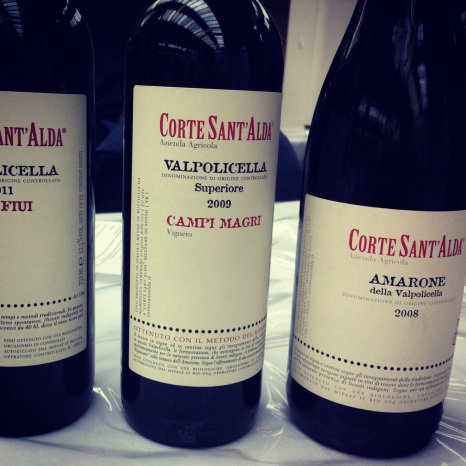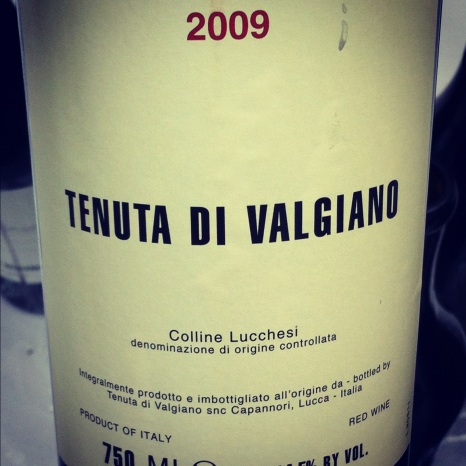The Natural Wine Empire Strikes Back
In response to a recent editorial in the Gambero Rosso decrying the merits of “natural wine”, a group of growers in Italy has banded together to write an open letter to the magazine highlighting the folly of its broad brush strokes viewpoint on natural winemaking. A full translation of the letter can be found on Jeremy Parzen’s website Do Bianchi and is well worth a read.
The term “natural wine” is poorly defined. Most would agree that is a minimally invasive approach that limits chemical intervention in the vineyard and adjustments in the winery, but after that it gets almost as hazy as some of the wines themselves. What amount of sulphur addition qualifies as minimal? Can natural winemakers still utilise oak if they feel that it will benefit the wine, or will this attract a tidal wave of derision from their foot stomping, amphorae fermenting comrades? Jamie Goode, himself a fan of “natural wines”, has put together a good summary of the current state of play but, whatever way you look at it, it’s fair to say that the term “natural wine” can be manipulated to suit a variety of agendas.
The proponents of “natural wine” contend that it provides the drinker with an unadulterated, and hence unrivalled, expression of terroir. The detractors exclaim that adhering to such principles results in an unacceptably high percentage of faulty wine. Of course the term “natural wine” itself only serves to fuel the debate as there may be an underlying implication that if something doesn’t meet the description of “natural wine”, it is by definition “unnatural wine” – hardly something that a winery would want to put on their labelling. I have heard many people suggest that “artisan wines” might be a better collective term, and to some extent I agree, but I think there are still too many negative connotations that would be associated with wines falling outside of this umbrella. Although, maybe that in itself is not a bad thing?
As with any wine philosophy, the best thing to do is to taste some of these wines for yourself and both The Real Wine Fair and RAW will take place again in London in 2013. I highly recommend going and you can read my thoughts on some of the wines from the 2012 fairs here.
I’m still not sold on the more radical aspects of the movement and on one occasion even found that the more conventionally made wines from an individual producer showed comparatively better than their more “natural” siblings. One could have argued of course that even those more conventionally made wines would fall under the “natural wine” umbrella on account of the producer’s overall winemaking philosophy, but this only further emphasises the need for a better definition of the term “natural wine”. What I can say from my tasting experiences so far though is that the good wines seem to be very, very good indeed, whilst the bad wines are almost undrinkable. To be honest, percentage-wise, I haven’t come across as many faulty “natural wines” as others seem to have encountered (although admittedly it has been more widespread than for conventionally made wines) and seeing as some of the highs have been so memorable, I’ve vowed to continue with my exploration. These wines are nothing if not interesting and that in itself is a good thing.
As the term “natural wine” is currently so loosely defined, one of the more interesting aspects of the rebuttal of Gambero Rosso’s editorial was the considerable range of producers whose industry collectives / representative bodies signed the letter on their behalf. Presumably, by being listed in this letter and affiliated with these bodies, it is safe to assume that the growers / producers consider themselves to be making “natural wine” in some shape or form, and whatever your opinion of these wines, at a minimum, this listing provides Italian wine drinkers with a consolidated listing of such producers. Here they are in alphabetical order:
Natural Wine Growers in Italy
A: Albani, Alberto Anguissola, Aldo di Giacomi, Alessandro Torti, Alla Costiera Altura, Ampeleia, Andrea Scovero, Andrea Tirelli, Antiche Cantine de Quarto, Arianna Occhipinti, Aurora, ‘A Vita.
B: Bonavita, Borgatta, Bressan.
C: Ca’ del Vent, Ca’ de Noci, Camerlengo, Camillo Donati, Campi di Fonterenza, Campinuovi, Cantina Giardino, Cantina Margò, Cantine Valpane, Cappellano, Carla Simonetti, Carlo Tanganelli, Carussin, Casa Belfi, Casa Caterina, Casa Coste Piane, Casale, Casa Raia, Casa Wallace, Cascina degli Ulivi, Cascina delle Rose, Cascina la Pertica, Cascina Roccalini, Cascina Roera, Cascina Tavijn, Cascina Zerbetta, Casebianche, Castello di Lispida, Castello di Stefanago, Cinque Campi, Clara Marcelli, Colombaia, Corte Sant’Alda, COS, Cosimo Maria Masini, CostadiLà, Crealto, Cristiano Guttarolo, Crocizia.
D: Daniele Piccinin, Daniele Portinari, Dario Prinčič, Davide Spillare, Denavolo, Denis Montanar, Denny Bini-Podere Cipolla.
E: Elisabetta Foradori, Elvira, Emidio Pepe, Eugenio Rosi, Ezio Cerruti.
F: Fabbrica di San Martino, Farnea, Fattoria Castellina, Fattoria Cerreto Libri, Fattoria Mondo Antico, Fattorie Romeo del Castello, Ferdinando Principiano, Ferrandes, Filippi, Fiorano, Fontemorsi, Franco Masiero, Franco Terpin, Frank Cornelissen.
G: Gatti, Gianni Massone, Gino Pedrotti, Giovanni Montisci, Giuseppe Rinaldi, Gonella, Gradizzolo, Guccione.
H: Haderburg.
I: Il Cancelliere, Il Cavallino, Il Maiolo, Il Paradiso di Manfredi, Il Tufiello, Irene Cameli, Iuli.
L: La Biancara, L’Agricola del Farneto, La Castellada, La Distesa, Laiolo, La Marca di San Michele, La Moresca, La Pievuccia, La Stoppa, La Visciola, Le Barbaterre, Le Calle, Le Chiuse, Le Cinciole, Le Coste sul Lago, Loacker, Lo Zerbone, Lusenti.
M: Macchion dei Lupi, Marabino, Marco de Bartoli, Marco Sambin, Marco Sara, Maria Letizia Allevi, Maria Pia Castelli, Mario Macciocca, Martilde, Massa Vecchia, Massimiliano Croci, Mlečnik, Monastero Trappiste di Vitorchiano, Monte dall’Ora, Monteforche, Montesecondo, Monte Versa, Musto Carmelitano.
N: Natalino del Prete, Nino Barraco.
O: Oasi degli Angeli, Odilio Antoniotti.
P: Pacina Panevino, Paolo Bea, Paolo Francesconi, Pialli, Pian dell’Orino, Pian del Pino Piccolo, Bacco dei Quaroni, Pierini e Brugi, Pierluigi Zampaglione, Podere Concori, Podere della Bruciata, Podere Gualandi, Podere Il Santo, Podere La Cerreta, Podere Le Boncie, Podere Luciano, Podere Luisa, Podere Pradarolo, Podere Santa Felicita, Podere Veneri Vecchio, Poderi San Lazzaro, Poggio Trevvalle, Porta del Vento, Praesidium, Punta dell’Ufala.
Q: Quarticello.
R: Radikon, Radoar, Remo Hohler, Roagna, Ronco Severo, Rugrà.
S: San Fereolo, San Giovenale, San Polino, Santa Caterina, Santa Maria, Serafino Rivella, Skerlj, Stefano Amerighi, Stefano Legnani, Stella di Campalto.
T: Taverna Pane e Vino, Tenuta di Valgiano, Tenuta Grillo, Tenuta l’Armonia, Tenuta Montiani, Tenuta Selvadolce, Tenute Dettori, Terre a Mano, Tenuta Migliavacca, Tenuta Terraviva, Tenuta Vitereta, Trinchero, Tuni.
V: Valdibella, Valli Unite, Vercesi del Castellazzo, Vignale di Cecilia, Vigneto San Vito, Villa Bellini, Vino di Anna, Vittorio Bera e figli, Vodopivec.
W: Walter Mattoni, Weingut Ebnerhof.
Z: Zidarich.




Nice post! Thankfully, here in Spain, we’ve been spared from this time-wasting and irrelevant nonsense! Probably because there are so few of us, so we’re even less significant to the wine world than the French and Italians are! I used to get quite upset in the past with silly articles like the latest one in GR, but now I just focus on making good natural wine. I have no time for self-seeking naysayers any more. I think it’s at best unproductive and pointless to focus the nat wine ‘debate’ , on supposed faults, and on the semantics of the word natural, when there are so many other aspects that could be discussed that could be of benefit to the wine world as a whole, especially consumers. Anyway, ‘Cheers’ or “Salud y buen vino” 🙂
Thanks – Yes I do agree that too frequently the semantics of the debate take precedence over good ol’ fashioned appreciation and enjoyment of the wines themselves.
Funny thing. I could drink a different wine every day for the rest of my life and not have a wine from the same vineyard twice. There is a huge world of wine to explore out there. Take or leave the natural growers as you continue on your wine enjoying journey. Take or leave the wine from the guys who manufacture wine to suit the marketing department and move on. Take or leave the wine from the guys who insist on burying crap in a cow horn when the moon is up. Then one can compare and contrast and most importantly, keep moving. It’s a big world.
Best,
Conor
Thanks for your comment Conor. You could indeed and would probably drink very well too, although such dabbling with so many different winemaking philosophies might draw the scorn of the whole spectrum of winemakers – natural, organic, biodynamic and conventional – such is the level of self righteousness coming from all sides on these topics 🙂
…and from bloggers, journalists etc. I should add. In fact, it’s probably quite a phoney war fought in the pages of wine magazines and blog comment threads. The growers just want to get on with making delicious wine.
Such nonsense. It’s only wine. (Not that I don’t love it).
It’s a phoney war alright! I just noticed a few months ago that I seem to be the only natural winemaker who comments regularly on the nat wine ‘debate’! Neither are there many normal winelovers or consumers involved. Everyone seems to be professional writers and bloggers, with their own agendas and preformed opinions/prejudices/fantasies about what natural wine is or is not.
Did you see the Chapoutier article this weekend and the subsequent response from the folks behind The Real Wine Fair?
http://therealwinefair.com/the-return-of-chapooterman/
More fuel poured on the fire from some of the more extreme and outspoken elements of both camps.
I’ve just read it now – thanks for the pointer.
Pingback: Exploring Biodynamics – A Visit To Tenuta Di Valgiano | The Vine Inspiration
Pingback: Real Wine Month – April 2014 | The Vine Inspiration